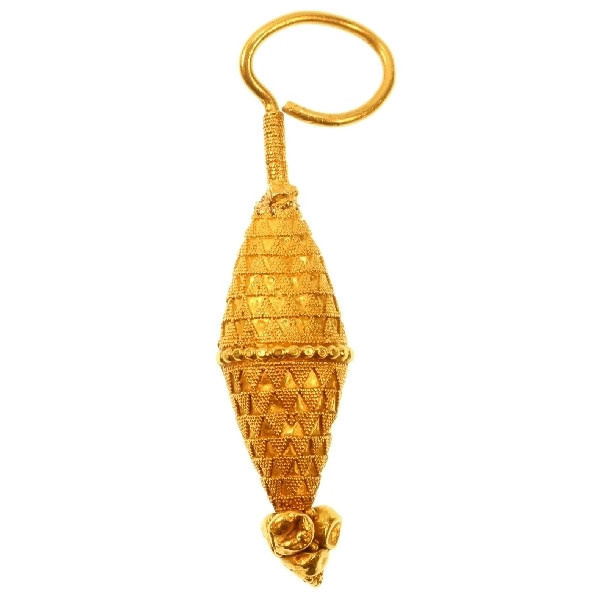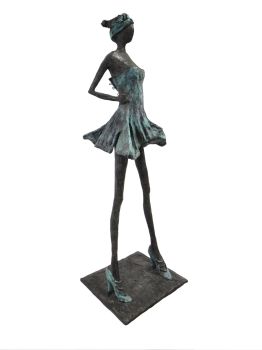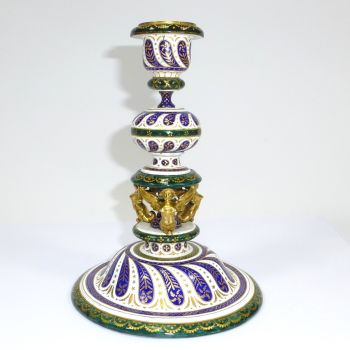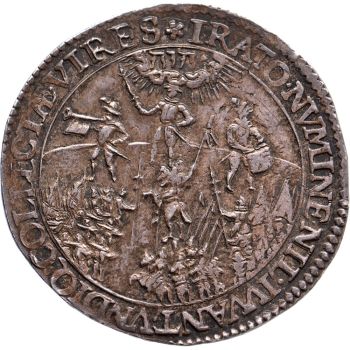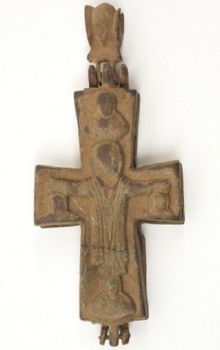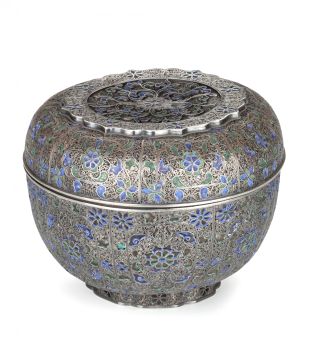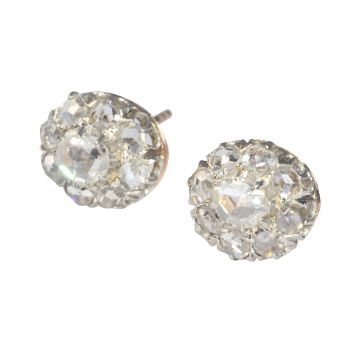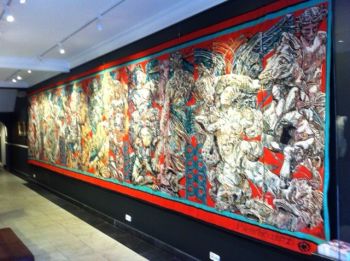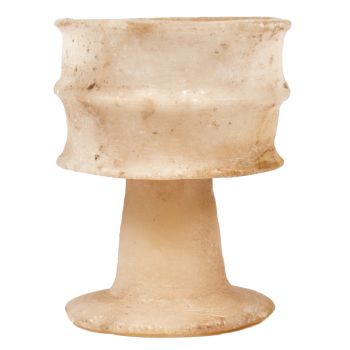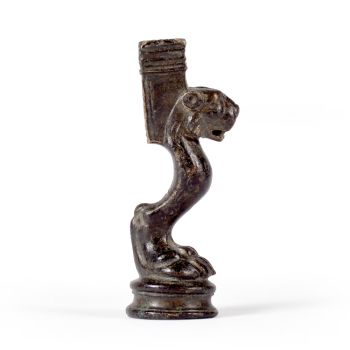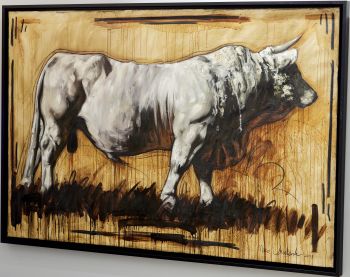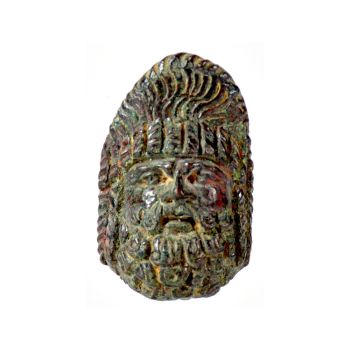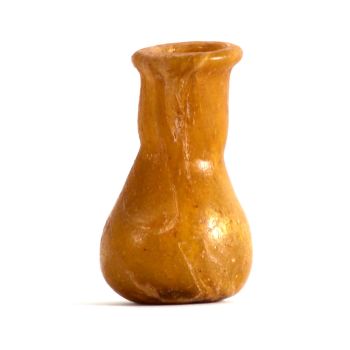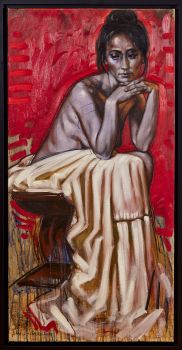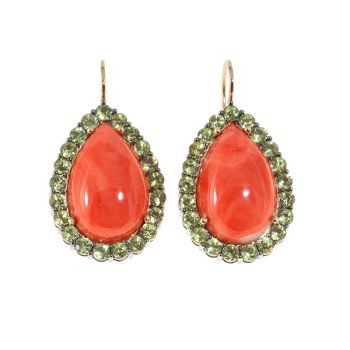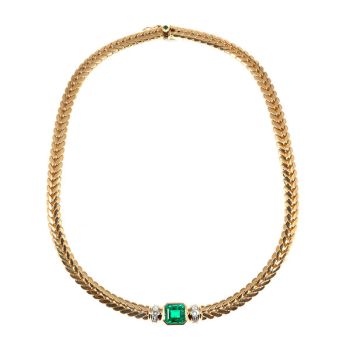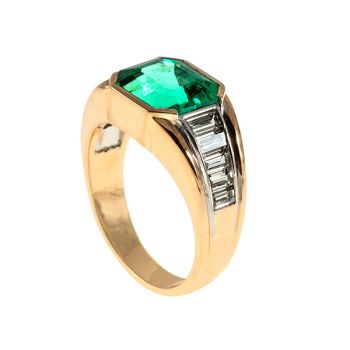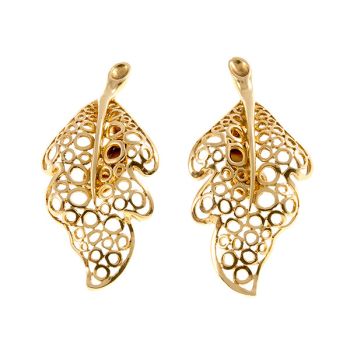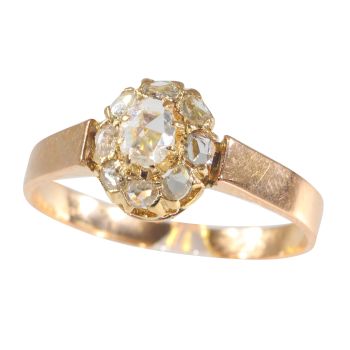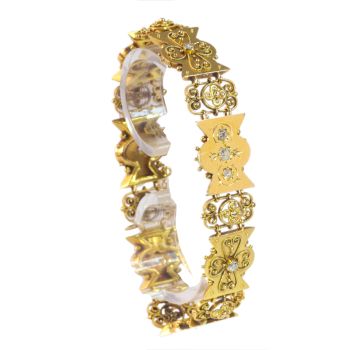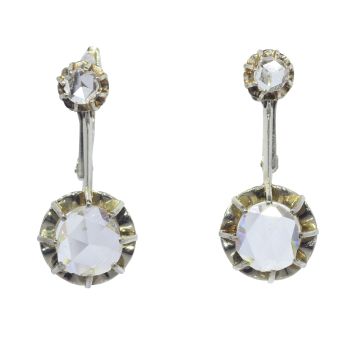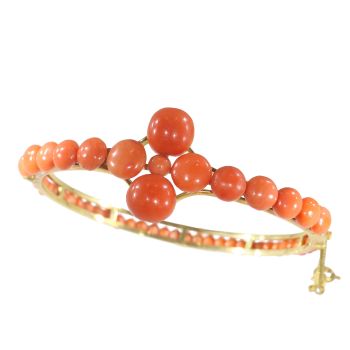Brinco antigo granulado de ouro amarelo 400
Artista Desconhecido
Ouro amareloOuro
€ 9.250
Adin Fine Antique Jewellery
- Sobre arte
Being crafted between fourteen and seventeen centuries ago, this ear pendant in a high gold alloy still exhibits the very essence of what a jewel should be: the adornment of a lady. While wearing this precious piece, it doesn't take long before you drift off to dreams about the journeys of its time travels into the 21st century.
From an ancient goldsmith's design into a tangible gold form, constructed out of a repetition of the strong triangle shape until the smallest granulation pattern in the ancient Caucasion style. Specially crafted to be worn by the greatest of its era and long after. Now, envision to where this remarkable jewel -worthy of a showroom in a museum- could lead you when you would just let it adorn you.
Country of origin : Caucasus
Style specifics : the granulation technique
Period : between the 4th Century and 7th Century A.D.
Material : yellow gold, at least 18K
Technique : Granulation. Granulation is a technique where the goldsmith uses very small balls (granules) of metal, which arenot soldered to the piece but welded. This technique demand very high skills and precision from the maker. Today with all the modern techniquesit's still very difficult to only match the quality of the goldsmiths that made this earring so many years ago!
Extra : A similar ear pendant is in the collection of the Schmuckmuseum in Pforzheim(museum of jewelry in Pforzheim, Germany) with inventory number 1957/4. Check our pictures for the inventory page of the Museum on this piece.
Weight : 8.20 gram (5.27 dwt)
Hallmarks : No trace
Condition : Extremely good condition considering its age
( click here for our condition scale)
It is a bit bent and shows some dents but that's not really exceptional considering it's age. We would describe this earring more as a treasure, an artifact. When we found it, it had a fissure in the top part, making it questionable if it would staytogether, so we had it repaired in the most modern way, with a laser. Like that the complete piece was not heated as it would have been the case if it was repaired in the old way. When it would have been done in the old way (heated with a flame) all thepatine (color of the piece that builds up over the years) would have been affected. The repair is very hard to see. Most of the time people only see it when being told. For the rest we kept it in it's original way, like it should be.
Dimensions : length approx. 7.00 cm (2.76 inch)
When referring to this piece : Mention the following number: 02157-3022 or click here.
Click on the following links to see more of our:
earrings
filigree & granules
Latest acquisitions. - Sobre artista
Pode acontecer que um artista ou criador seja desconhecido.
Algumas obras não devem ser determinadas por quem são feitas ou são feitas por (um grupo de) artesãos. Exemplos são estátuas dos tempos antigos, móveis, espelhos ou assinaturas que não são claras ou legíveis, mas também algumas obras não são assinadas.
Além disso, você pode encontrar a seguinte descrição:
•"Atribuído a …." Na opinião deles, provavelmente uma obra do artista, pelo menos em parte
• “Estúdio de…” ou “Oficina de” Em sua opinião um trabalho executado no estúdio ou oficina do artista, possivelmente sob sua supervisão
• "Círculo de ..." Na opinião deles, uma obra da época do artista mostrando sua influência, intimamente associada ao artista, mas não necessariamente seu aluno
•“Estilo de…” ou “Seguidor de…” Na opinião deles, um trabalho executado no estilo do artista, mas não necessariamente por um aluno; pode ser contemporâneo ou quase contemporâneo
• "Maneira de ..." Na opinião deles, uma obra no estilo do artista, mas de data posterior
•"Depois …." Na opinião deles uma cópia (de qualquer data) de uma obra do artista
• “Assinado…”, “Datado…” ou “Inscrito” Na opinião deles, a obra foi assinada/datada/inscrita pelo artista. A adição de um ponto de interrogação indica um elemento de dúvida
• "Com assinatura ….”, “Com data ….”, “Com inscrição ….” ou “Tem assinatura/data/inscrição” na opinião deles a assinatura/data/inscrição foi adicionada por outra pessoa que não o artista
Você está interessado em comprar esta obra de arte?
Artwork details
Related artworks
- 1 - 4 / 12
Artista Desconhecido
Pulseira de diamante do século 18 com entalhes de 2.000 anos1790
€ 23.000Adin Fine Antique Jewellery
 Com curadoria de
Com curadoria deDanny Bree
Lawrence Alma-Tadema
"Caracalla and Geta: Bear Fight in The Coliseum, AD 203" 1907
Preço em pedidoGallerease Selected
 Com curadoria de
Com curadoria deDanny Bree
1 - 4 / 12Artista Desconhecido
The bell of the VOC fortress in Jaffna, Sri Lanka1747
Preço em pedidoZebregs & Röell - Fine Art - Antiques
 Com curadoria de
Com curadoria deDanny Bree
1 - 4 / 12- 1 - 4 / 24
- 1 - 4 / 12

